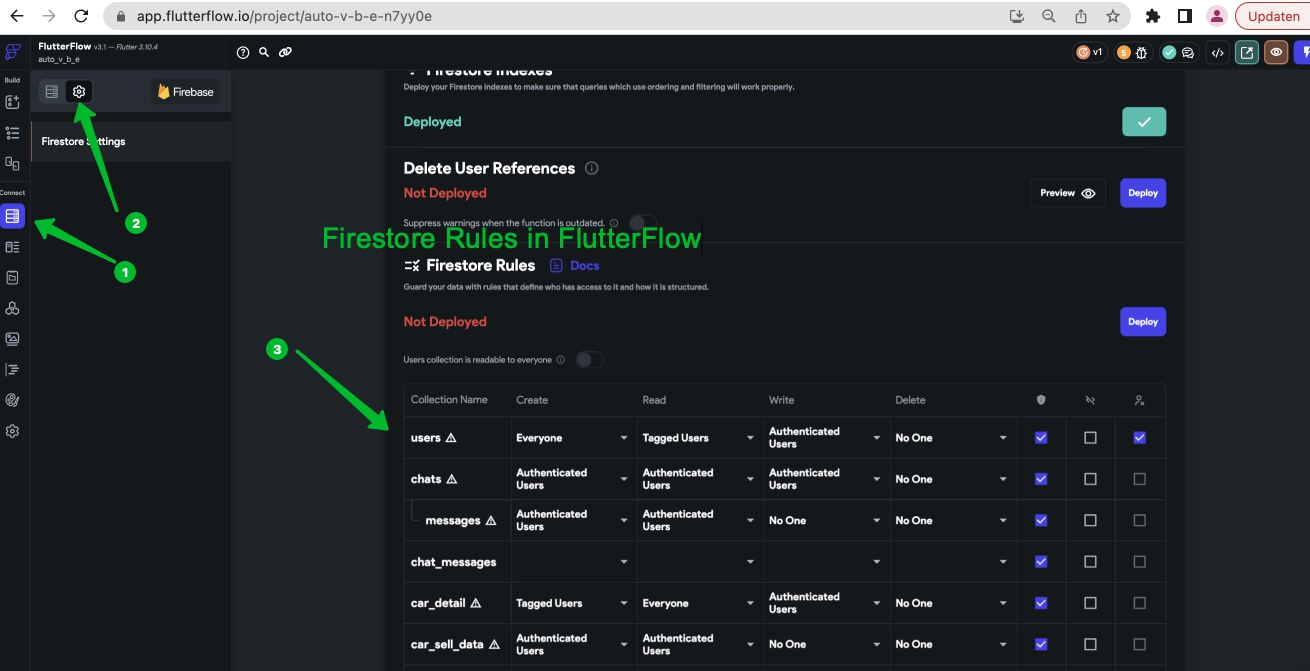1. Go to the Firebase Console (https://console.firebase.google.com/) and create a new project or select an existing one.
2. Once inside the project dashboard, click on the "Firestore Database" option from the left-hand menu.
3. In the Firestore section, click on the "Rules" tab.
4. Here you can write and modify the security rules for your Firestore database. Be cautious with the rules you set as they determine who can access your data and what actions they can perform.
5. After defining your rules, click on the "Publish" button to save and activate the new rules.
Remember to test your rules thoroughly to ensure they meet your security requirements and do not inadvertently block legitimate access to your data.
Always keep in mind that managing Firestore Rules is an essential part of securing your application's data, so make sure to review the Firebase documentation on Firestore security rules for best practices and to stay up-to-date with any changes that might have occurred since my last update.
Please check the latest documentation or announcements from FlutterFlow to see if they have introduced any updates that may allow Firestore Rules configuration directly from their UI.
If you happen to configure something incorrectly in your Firebase project, don't worry, you have a safety net available through the Firebase console. Firebase provides a straightforward process to revert to a previous version of your configuration.
If you make any changes to your Firebase project's settings, such as Firestore security rules, Cloud Functions, or other settings, and later realize that these changes have caused unexpected issues or undesirable behavior, you can easily roll back to a previous version that worked correctly.
Here's how you can go back to a previous version using the Firebase console:
1. Open Firebase Console: First, navigate to the Firebase Console (https://console.firebase.google.com/) and log in with your Google account.
2. Select the Project: From the Firebase project dashboard, select the project for which you want to revert the configuration.
3. Go to Settings: Look for the gear/settings icon usually located on the top-left or top-right corner of the Firebase console, and click on it to access the project settings.
4. Version History: Inside the project settings, you should find a section called "Version history" or something similar, depending on the Firebase service you want to revert. For example, you might find "Firestore Rules Version History" or "Cloud Functions Version History."
5. Choose a Previous Version: In the version history section, you'll see a list of previous configurations or versions. Each version will have a timestamp or version number associated with it. Review the changes made in each version to identify the one that was working correctly before the problematic update.
6. Revert or Rollback: Once you've identified the appropriate version, select it, and then proceed to apply or roll back to that specific version.
By reverting to a previous version, you effectively undo any incorrect changes and restore the settings to a known, working state. This way, you can quickly resolve issues caused by misconfigurations or unintended modifications without having to manually revert each change one by one.
Remember to review your changes carefully before applying a previous version, as rolling back will replace the current configuration with the selected one, potentially affecting the functionality of your Firebase services. Always test the reverted configuration thoroughly to ensure it behaves as expected and resolves the issues you encountered.

Comments
Post a Comment